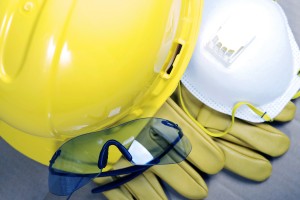At a high level, BIM allows the complete virtualization of the construction process before any structure is actually built. Because of the level of details these virtual models provide, construction professionals can identify potential risks and safety concerns found throughout the virtual construction process before anyone breaks ground.
Understanding risk while a structure is being built is one of the biggest benefits found in BIM. Below are five tips construction professionals should use to identify risks when using BIM model data.
- Walk the job, virtually. When using a 4D simulation, project teams have the ability to walk through the virtual jobsite, stepping through each key task, to identify potential hazards
 during all stages of a project. This allows better visualization of upcoming tasks, tighter planning for necessary resources, and ultimately preparing users for further discussions with the team.
during all stages of a project. This allows better visualization of upcoming tasks, tighter planning for necessary resources, and ultimately preparing users for further discussions with the team. - Add safety components to the model. Barricades, railings, scaffolding, and other safety components can be included in the simulation. Walk through the virtual construction site again and look for any gaps or areas that may have been overlooked. This will also provide necessary quantities of components needed at each stage.
- Use visuals in safety meetings. During routine safety meetings, spin up the BIM model on a monitor, send out the images, or create printouts. The visuals will enhance communications across all teams and stakeholders, providing a better understanding of hazard areas and task sequences. By using these visuals, the team should have a more comprehensive understanding of the safety process and potential concerns.
- Add animation to high risk tasks. It can be time consuming to add animation to every task on a project, but spend the time when choreography is needed. For example, if a large piece of equipment is being placed within the BIM model, be sure to animate the key steps that follow, such as: the delivery path, the placement of rigging, the movement of the crane and other equipment, the movement of workers, and so on. This additional animation helps further solidify team roles and responsibilities for each step.
- Get intimately involved with the model. When models are used heavily during pre-construction for planning and logistics, it creates a strong familiarity once construction begins. Now, the team has had the opportunity to virtually construct the job many times over, and know the job inside and out – including identifying and eliminating major areas of risk exposure.
According to a recent SmartMarket Brief by Dodge Data & Analytics, the direct relationship between BIM and safety is still emerging, but as the industry evolves and BIM adoption grows, more statistical data will be available to further validate the connection. Safety is a number one priority and concern for everyone involved in a construction project, and BIM provides an easy to use platform to analyze and mitigate risks within a project before any major construction ever takes place – a huge advantage for teams looking to achieve pristine safety and compliance on projects.
This blog post is by Tim Kelly, Product Manager at Assemble Systems. If you enjoyed this post, please help it spread by emailing it to a friend, or sharing it on Twitter or LinkedIn.

Comments are closed.